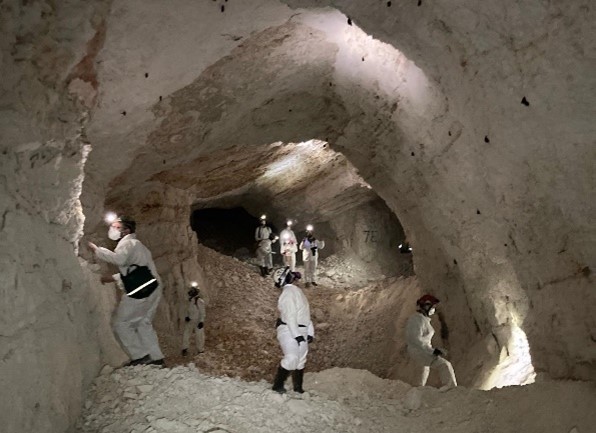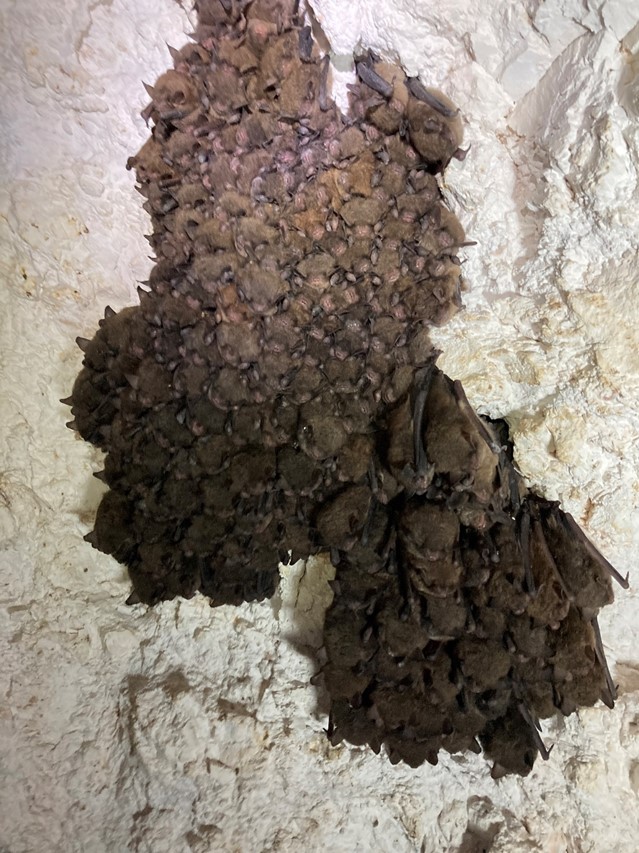Last month, Sarah and I had the opportunity to assist the Illinois Department of Natural Resources with a hibernaculum survey. Hibernacula surveys are performed with the goal of counting how many bats reside in the cave/mine, identifying species, and locating where they are within the cave/mine. We were both very excited as it was our first time experiencing a bat hibernaculum count. We geared up wearing our required PPE for entering the cave to prevent the spread of white-nose syndrome and avoid other hazards.

We had two teams perform the survey with each person fulfilling a role. There was the navigator who guided us through the cave and keeping track of which rooms were surveyed, three identifiers and counters who counted how many of each species were in each room, the photographer who took photos of clusters of bats too big for the counters, the photographer’s assistant who kept track of which photos were taken, the data recorder who recorded the numbers and species by room, and the videographer who recorded the survey. One of the counters also took the temperature of each room in the cave with a laser temperature gun. These temperature readings are important because we can track fluctuations in temperature of the cave over time. Some bat species, like the endangered Indiana bat, require selective climate conditions so they can lower their energy use and save their fat stores during hibernation. The best climate for Indiana bats requires having a stable temperature between 37-430 F and humidity levels between 65-95%. There are very few caves and mines that meet the Indiana bat requirements.
One way to tell species apart is by how they cluster together. Indiana bats and little brown bats are known to hibernate in large clusters with one cluster potentially containing over a thousand individuals. Tricolored bats and northern long-eared bats are known to hibernate individually or in small groups and rarely cluster. Another way to distinguish species is by comparing their fur color and wing color. Tricolored bats have a light tan colored fur while a little brown bat has dark brown fur that blends in with their wing color. We saw all of these species roosting on the walls and ceilings during our survey. Some roost pretty low on the walls allowing us to get better quality photos.

This type of survey is only done every few years to avoid disturbing the bats and so the data we collected is really valuable. This survey will be compared to previous years looking at species population numbers and room temperature to assess the status of bats using this hibernaculum. Overall, the survey took us six hours to complete and we saw several thousand bats with multiple different species. It was a long day underground, but we both loved getting to see hibernating bats!

